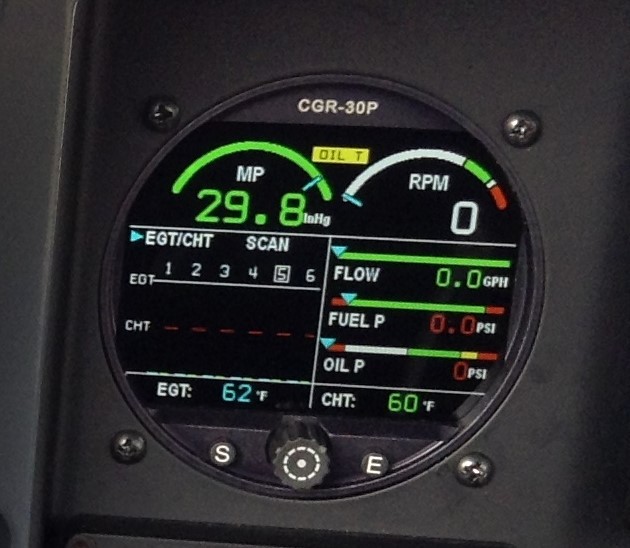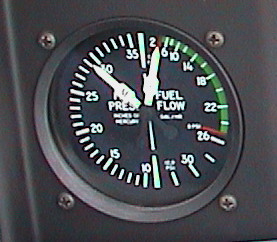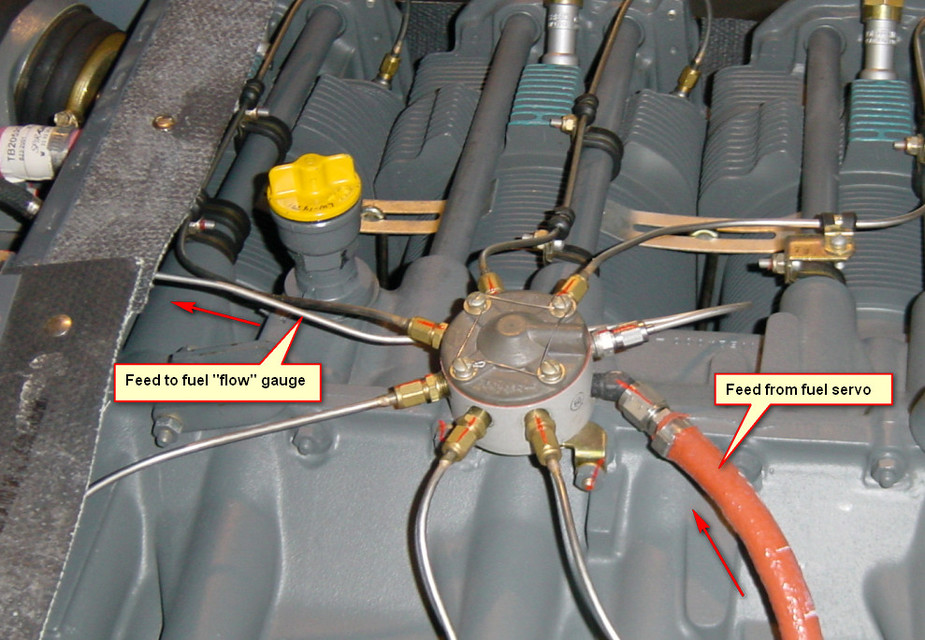In that case Colin your fuel pressure reading won’t relate in any way to the fuel pressure (indicated as fuel flow) on the old gauge.
I guess that indication will be useful for diagnosis of a failed fuel pump (either of them) once you get used to the normal indications in cruise.
Where will the pressure be sensed? If it is in the pipe from the fuel servo to the fuel distributor, then you need to watch out on how that is done because that is exactly where the transducer for a fuel totaliser goes (on a correctly done installation, not the Socata/DGAC-bodged ones which could not be corrected legally on an EASA-reg) and you need to avoid turbulence in that pipe.
Agreed Peter.
I have removed the gauge as part of an Avionics overhaul and put in a Certified CGR-30P. Fuel pressure is now measured at the servo rather than at the flow divider.
I have also removed the Tacho as it’s no longer required and to give extra panel spacece for a Golze 110B. 
On the TB20, the fuel flow gauge is just a pressure gauge

It takes a feed from the fuel distribution unit on top of the engine. I think this is normal for injected Lyco engines.

Where do EI recommend sampling the fuel pressure?
I have no idea what the spec is for that fuel “flow” gauge but presumably it is out there somewhere since as I say this is a very common arrangement.
The aircraft is not fitted with a fuel pressure gauge as standard.
The new engine analyser is producing the fuel pressure data.
Electronics International have come up with a fix for the problem, basically resetting the values in the system, using the Lycoming data and not the TB20 POH.
The O-540 engine has never been fitted to the TB20 AFAIN. Only the IO-540 has been fitted.
What are the markings on your existing fuel pressure gauge?
Having no fuel pump at all doesn’t work in a low wing plane, which is one reason that high wing planes exist! 
On a low wing plane, a low pressure mechanical pump is used, similar or identical to that installed on carburated cars, plus a low pressure backup electrical pump. Those typically operate at around 3 psi, but you actually only need enough pressure to overcome the pressure drop in the line.
How does that work in a low wing plane? You have to prime the fuel system before the pump somehow.
Carbureted engines run just fine with nature’s fuel pump, gravity only 
It’s interesting that they messed up the AFM in that way, but not uncommon. The maintenance manual for my plane is riddled with errors, for example specifying valve cover removal and clearance adjustments at every annual inspection, for an aircraft that after the initial prototype was never produced without hydraulic valves.
I got this reply from a very reputable fuel servo specialist in the USA:
I cannot see how a spec for the min fuel pressure of say 0.1psi o 0.5psi could apply to after the engine driven fuel pump. There is no way IMHO the engine driven fuel pump could produce such low numbers. The fuel servo would not work at all. Let me ask somebody in that business…
But that raises the Q is what is the point of monitoring this at all. The only point in the fuel system where you will see a useful data point will be somewhere after the engine driven fuel pump. Before it there is just the head of the fuel in the tanks, possibly elevated by the electric fuel pump. I guess that monitoring it would tell you if the engine driven fuel pump has failed.
Just because something is certified doesn’t mean nobody made a cockup somewhere  The FAA or DGAC or EASA etc doesn’t check the stuff submitted for approval. The data is assumed to be valid, because it is submitted from an approved organisation. That is why there have been forgeries in e.g. flight testing (some Czech designs, IIRC).
The FAA or DGAC or EASA etc doesn’t check the stuff submitted for approval. The data is assumed to be valid, because it is submitted from an approved organisation. That is why there have been forgeries in e.g. flight testing (some Czech designs, IIRC).